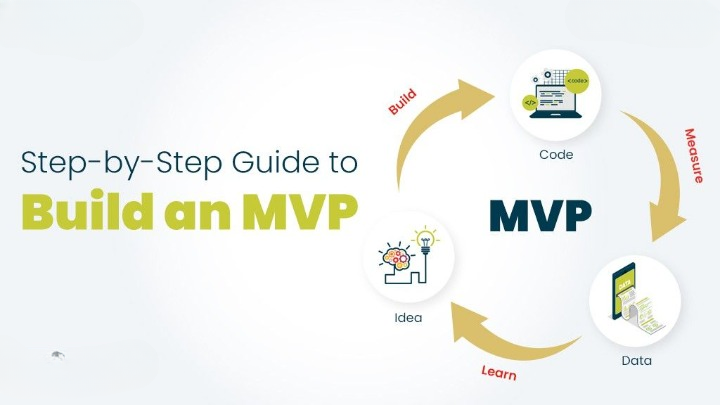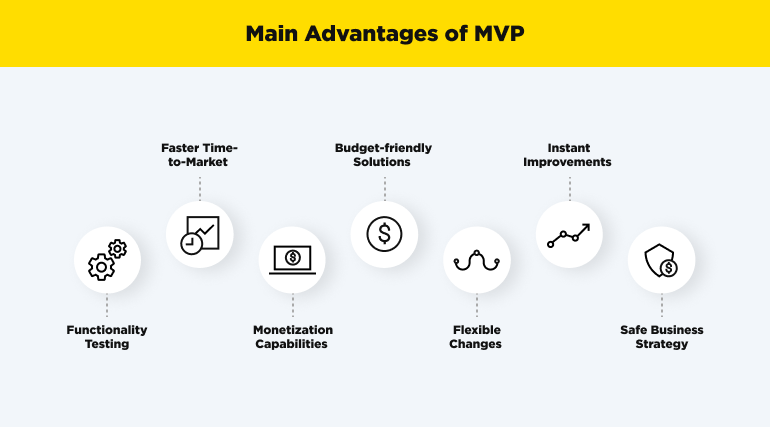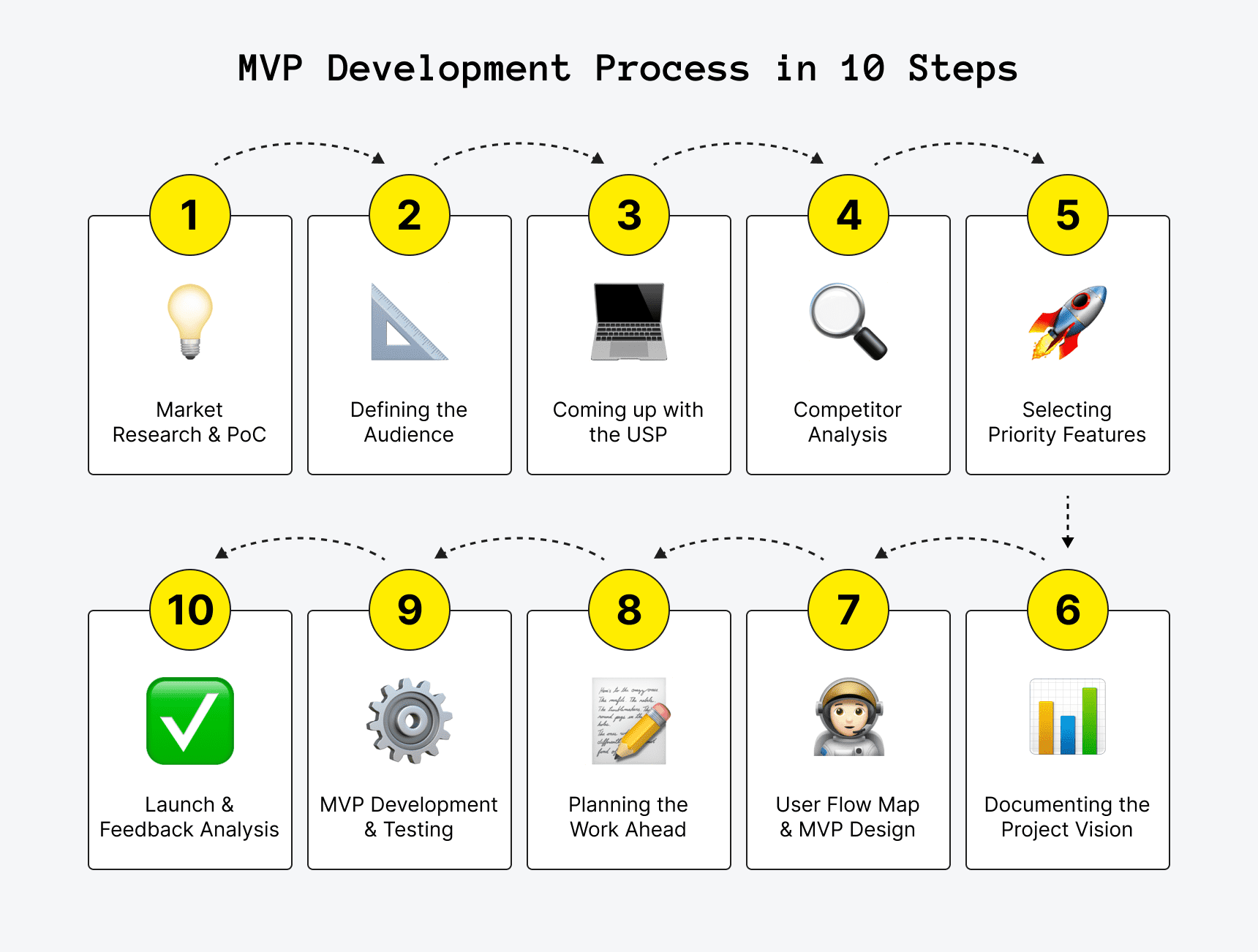How To Build a MVP For Startup: Startup Product Development Guide
 Samantha Hayes
Samantha Hayes
An MVP, short for minimum viable product, is a term commonly used in business and startups, even for those not in Startup product development. It's a smart strategy that allows startups to introduce themselves to the public and attract investors while saving money.
Statistics show that many startups fail, with up to 90% collapsing. Around 10% close within the first year, and up to 70% don't make it past the second to fifth years. The main reasons for this include misunderstood market needs (about 40%), running out of funds (30%), strong competition (20%), and issues with marketing, pricing, and design (10%).
Developing an MVP is a great way for startups to avoid these pitfalls and bring their projects to life. On this page, we'll explain what a minimum viable product is and how to build one successfully, giving you insight into the MVP product development process.
Why Do You Need a Minimum Viable Product?
An MVP (Minimum Viable Product) serves as a crucial tool at the outset of Startup product development. Crafting an MVP early in the product development cycle allows you to assess the true potential of your idea and determine the best path forward in pursuit of product-market fit.
Moreover, MVP development facilitates building connections with your target audience at reduced costs and accelerates product delivery.
Generally, whether it's an app, tool, or service, a product aims to fulfill consumer needs by addressing their problems or enhancing their daily lives. If successful, users will recognize its value organically, leading to a self-propagating cycle of adoption through word of mouth—a concept known as product-led growth. This principle remains pivotal even during the initial stages of MVP development.
The effectiveness of the MVP approach is underscored by industry giants like Spotify, Amazon, and Airbnb. Additionally, numerous startups, both large and small, have leveraged this strategy to transform promising product ideas into successful ventures.
MVP Development Benefits for Startups
The benefits of an MVP are intricately tied to its primary purpose, goals, and features. Let's delve into them, outlining how an MVP can add value and have a positive impact on a startup project.

Thorough examination of your product through customer experience analysis: Customer feedback plays a pivotal role during MVP creation, offering insights into the most and least appealing aspects of your product or service. This enables you to refine your offering to better meet user needs and stay competitive.
Enhanced investor appeal: Presenting a functional MVP boosts your attractiveness to potential investors and is considered a best practice in pitch deck creation. Investors are more inclined to engage with a tangible project rather than a mere conceptual idea.
Streamlined testing phase: The flexibility of MVP development allows for easy adjustment, removal of unnecessary features, bug fixes, and incorporation of new functionalities during the testing stage. This adaptability facilitates smooth updates and accelerates product readiness.
Cost efficiency: Inefficient financial planning can pose significant challenges for startups. MVP development helps mitigate this risk by reducing costs, reallocating funds as needed, and ultimately minimizing expenses, thus safeguarding the startup budget.
How to Build an MVP in 10 Steps
"When you deep dive into the steps of MVP development, first understand why React Native is a great choice for startups!"
The MVP development process is deeply structured and split into visible milestones. To help you shift to the practical part, we'll dwell on each stage in detail and provide you with tips or examples to fall back on.

Step 1: Do the Market Research
The very first and extremely significant stage of MVP development is analyzing the market you want to enter. You must examine the following data:
the audience's needs and customer behavior;
main market tendencies;
price level and rate of return;
advertising and promotion.
Begin by going through a proof of concept (POC) step to decide how your product will stand out among the others. This will help you provide a valuable solution that'll meet user expectations. You will then move on from POC to prototype to MVP creation.
Step 2: Narrow Down Your Key Audience
Yes, this is true: instead of trying to cover most of the population, you should try to minimize and break down your target groups. When you build an MVP, your desire to make the end product popular among 100% of humanity is quite understandable. But this is not a viable option which might ruin the whole project with inevitable financial losses and burnout of you as a project owner.
So concentrate mainly on those people who will be eager to purchase and use your product because they need it. At this and the next stage, you will need to deeply analyze the target audience; it will be helpful both in the MVP creation and during the promotional campaign.
When defining who your potential clients are, stick to the main points:
their age, sex, place of living, marital status, occupation;
their paying capacity;
the type of gadgets they prefer;
how the problem your minimum viable product will be solving correlates with them.
In the end, you will get a portrait of your average product consumer.
Step 3: Think of Your USP
To meet consumer demands, your minimum viable product should fix some problems or take their current experience to a new level. Define which solution the MVP will offer to the target audience and how it will hook the clients.
You need a great unique selling point (USP) that solves a real problem. For instance, an audiobook player can have the following selling points:
support different file formats;
synchronization between the user's various devices;
timer and night mode settings.
Think of what makes it unique or way ahead of the benchmarks and concentrate on this feature set that'll bring users value (this will also be helpful during product promotion). Make sure all the useful insights are carefully documented so that in the future you can understand where the concept stemmed from.
Step 4: Monitor Your Rivals
Even though each product is special in its own way, it's possible that there may be analogous or similar solutions out there. Either way, there will always be competitors wishing for their piece of the pie. Analyze your future competitors and keep the collected data organized (at least in a spreadsheet).
What do you need to know about your competitors? Make sure you have checked for the following:
their website;
their social network pages;
their activities in the mass media;
their participation in professional exhibitions, etc.
This will help estimate your product compatibility and avoid exaggerated expectations.
Step 5: Shortlist Your MVP Features
Before moving on to actual development, pick several main features that will become the core of your minimum viable product. Set up the list of must-haves and work on feature prioritization.
As a rule, a minimum viable product usually includes a limited amount of only the most necessary functions. It's the backbone of MVP development for a startup. Define them and complement them with a list of additional features for later.
Giving you a specific example, here's a small part of the product feature list we have for one of Upsilon's products called OrgaNice.

Step 6: Document Your Project Vision
Taking the right MVP development course right from the start is very important. Do your best to conduct one or several meetings to discuss all the major principles of the project. It'll help you create a detailed action plan to facilitate your MVP development process. Here are some tips:
Stay focused on the costs and devise your own strategy of using a reasonable quantity of time, effort, and funds. Remember that the startup funding process isn't easy, and you wouldn't want to drain your budget inadvertently.
Stick to the key features of the minimum viable product and direct most of your resources to their development.
Mind that client feedback will impact your end product. Prepare to collect it in advance and make sure all the necessary channels of communication are defined and set up.
Think of promotion methods that will push the newborn product ahead. Landing pages, social networks, and contextual advertising will significantly assist with this. You may even consider organizing a fundraising activity on a platform like Kickstarter.
While discussing the future minimum viable product, ensure each of your responsible team members is involved in the discussion and has shared their vision of the product, top priorities, and funds distribution. A varied web development team can bring in many expert insights.
Step 7: Map Out User Flow and Design the MVP
You need to anticipate the user experience with the product and help them interact with the MVP effectively. To ensure a seamless journey, create a user path map or build a User Flow Diagram that will let you analyze:
whether your interface is intuitive enough for clients;
how they reach the needed information or features;
and if your and your clients' vision of the product match.
Furthermore, a User Story map will help you plan and describe the journey a user takes. For instance, here's an example of a User Story that we use for our product OrgaNice.

As for the MVP design, there is no need to make it perfectly polished. At this point, the UI/UX design must conform to the core features of the MVP and be simple and intuitive.
Use a click-through prototype that will demonstrate what the final product will be like. Here's a graph we used for OrgaNice, depicting the expected user actions. It was used as a referral during the prototype creation process.

Step 8: Plan the Work Ahead
Investing time in building a detailed product development roadmap is a perfect way to keep the team organized and on the same page at all times. Indicate which work you have ahead, split it into milestones, and jot down the possible assignees. Here each step should be defined with relevant tasks assigned to the team members.
Generally, development goes much smoother when you have a structured plan. Plus, it allows you to dynamically make changes to the plan and see the iterations. There are various startup tools that you can use for making a plan, assigning tasks, and monitoring the progress.
Step 9: Develop and Test
As soon as all the possible information has been collected and deeply analyzed, it is time to start the MVP development process. Once you've started building the solution, keep in mind several things:
look into the strong and weak sides of your minimum viable product, along with the ways to improve them;
choose your management and development technique and proceed with QA testing;
pay attention to risks, both internal and external.
Step 10: Launch the Solution and Work on Feedback
After MVP release, it is essential to continue with further MVP testing and analyze the reviews received from users. Mind those mentioning the interface and usability, the list of features, design, and the overall customer experience.
Did they enjoy using the product?
Are they likely to recommend it to their friends, colleagues, etc.?
Is it worth its price?
Which features should be added/removed?
These are all notable product development questions, and opinions on them can be diverse. So it is better to concentrate on some recurring issues and improve the product based on them. If you are holding a product presentation after the MVP launch, create your guest list in advance, choose speakers, and select a professional conference photographer to maximise the benefits.
Final Take on How to Create an MVP
Launching a new product can be daunting, especially considering competition, time constraints, financial limitations, and uncertainty about outcomes. However, a minimum viable product offers a strategic solution to navigate these challenges, mitigating risks, minimizing costs, and capturing your target audience by addressing their needs.
Undoubtedly, MVP development for startups is a multifaceted process that demands meticulous planning and execution across various stages. By adhering to these stages and leveraging our expert tips for successful MVP implementation while learning from the mistakes of others, you can ensure a positive MVP product development journey.
At Upsilon, we boast a track record of delivering MVP development services to startups, aiding numerous companies in their growth journey. Our agile approach, sprint-based pricing, and exclusive discounts for startups make us a reliable partner. Should you have any queries, don't hesitate to reach out; we're here to assist you every step of the way!
Subscribe to my newsletter
Read articles from Samantha Hayes directly inside your inbox. Subscribe to the newsletter, and don't miss out.
Written by
